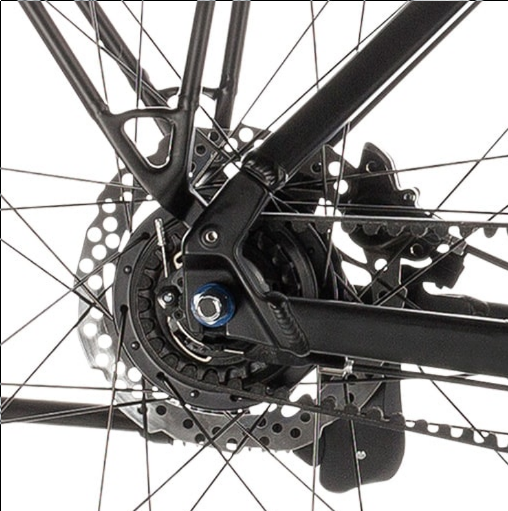I've never tried them, but some suppliers such as Wheels offer an emergency hanger which is held in place by the clamping of the quick release. while such a solution may allow you to attach any modern derailleur to your bike, it would not be easy to live with, as removing and reinstalling the rear wheel would become an ordeal. Also, the shifting on many systems may suffer from the derailleur mount being further outboard than intended.
I'm not sure whether this relates to your hub's specific problem, but aside from the cassette joint issue Nathan mentioned (and I will note there is a dedicated cassette joint for belt drives), Shimano internal gear hubs can suffer as a result of excessive belt tension, and some manufacturers have shipped Alfine bikes with belt tensions too high from the factory. The correct tension for a single speed belt drive may be too high for an Alfine hub. Most of the belt-drive related posts on the S-Tec forum relate clicking in Alfine hubs to too high tension.
Consider this post from a Shimano product manager 7 years ago:
Current 8 speed hubs use roller clutches instead of pawls so they should be silent when pedaling forward. We hear this complaint a good amount when our hubs are used with belt drives. The heart of the issue seems to be that internally geared hubs like to have relatively low chain/belt tension and that belts need to be at relatively high tension to stay on. You may need to fine tune the belt tension a little differently than you generally would in order to make sure that you are at the very low end of the acceptable tension range recommended by Gates.
We've also seen issues with noise coming from the belt drive cog moving on the driver unit of the hub. It may be worthwhile to add a little grease to the cog/driver unit interface.
In these cases it can also be helpful to reach out to the companies that make the cog and belt (they may both be Gates but anyone could be making the cog).
While the Shimano recommendation seems to be to set the belt drive at the low end of the drive manufacturer's prescribed range, Alee Denham of CyclingAbout makes the case for running even lower belt tension on the basis of improved efficiency:
That said, if you use a particularly stiff frame, you can lower the belt tension below the recommendation. You didn’t hear this from me, but I’ve been slowly reducing the belt tension on my KOGA slowly over the last year, and frankly, it’s getting ridiculous. My belt can now touch my chainstay, it’s so far beyond the minimum that I can’t even measure it – and I’m a very strong rider, with a heavy load, riding up incredibly steep mountain roads.
At my approximate belt tension, and at the power outputs I push, my belt is likely running the same or lower friction than a chain. I only recommend trying this with a belt snubber fitted, which will make sure the belt stays on, even if the belt tries to skip.

